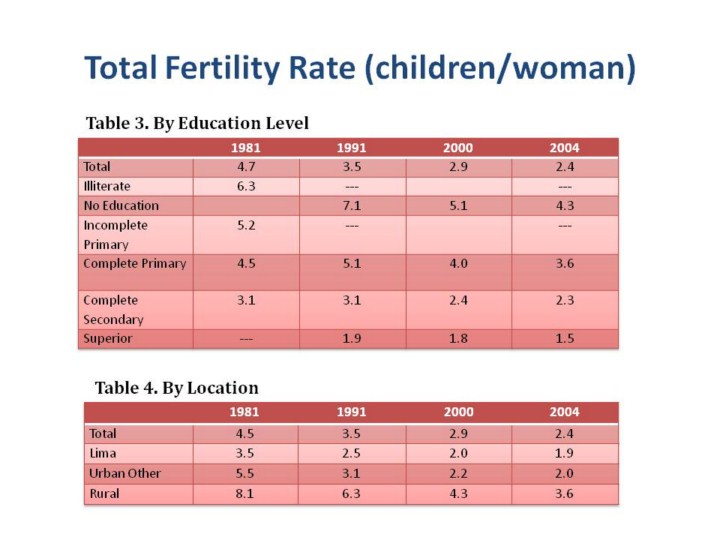| front |1 |2 |3 |4 |5 |6 |7 |8 |9 |10 |11 |12 |13 |14 |15 |16 |17 |18 |19 |20 |21 |22 |23 |24 |25 |26 |27 |28 |29 |30 |31 |32 |33 |34 |35 |36 |37 |38 |39 |40 |41 |42 |43 |44 |45 |46 |47 |48 |49 |review |
 |
The National Statistics and Information Institute in Peru has conducted extensive surveys of the population in 1981, 1991, 2000 and 2004. From these studies I focused on those that examined fertility rates and contraceptive use in relation to education level and location of the population.
When the population is stratified by education and location, the total fertility rate is significantly higher in the illiterate and rural population. From there it decreases steadily with increasing education level and with more urban location. |